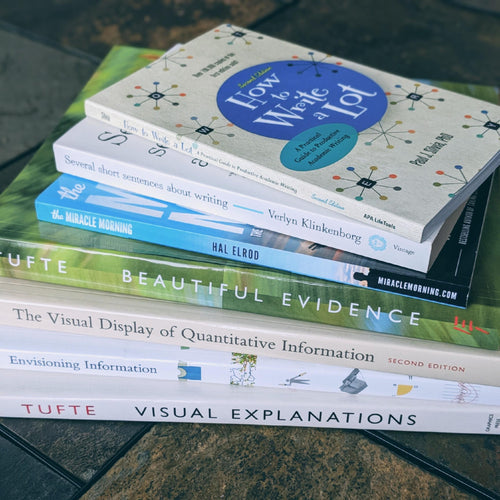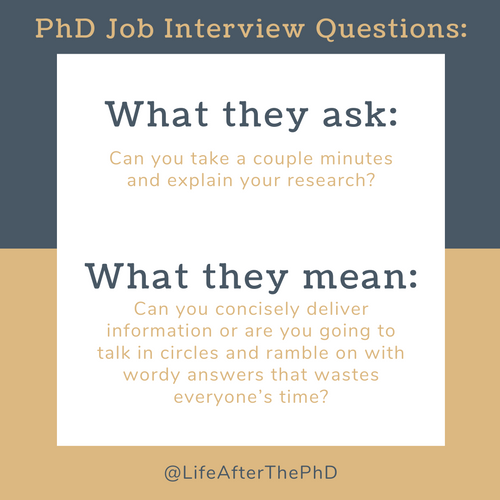Your Cart is Empty
Menu

Common pitfalls of PhD thesis writing and 17 tips to avoid them
10 min read
“Write 300 pages about everything you’ve done in the last five years. You have three months. See you then.”
No one specifically said these words to me, but they might as well have. Writing a PhD thesis is not just technically difficult but a true test of one’s inner motivation, focus, fortitude and perseverance. It felt like this massive amorphous and ambiguous blob which I needed to shape into a body of work, but any time I pushed one section into place the rest would start spilling out and need immediate attention. I had a solid body of work from which to draw from, but it was highly diverse with a lot of loose ends. I finished my 387-page, 77,800-word thesis in time by a brute force method filled with anxiety, self-loathing, self-deprecation poor self-care habits and endless frustration. I hope you can finish yours with a little less of each. Keep reading below for methods, skills and tricks that can help you have an easier time than I did.

Tip 1: Break it into such small, discrete goals that you almost feel silly writing them down individually.
This is by far the most important skill on this list. I only started developing this skill while writing my thesis but have since honed it while working in industrial R&D. Subscribe to our newsletter at the bottom of this page for the next blog post “Why I left academia in search of self-development”.
The value of this skill cannot be understated and luckily can be easily learned by anyone. Here’s how I make it work: Set aside 15 minutes for planning out your next 10-20 hours of work on a project. Create a large to-do list for each project (there are a lot of great Excel templates online). You can list some big milestones further out but keep the tiny details within range of tasks you could finish in the next few days. Every morning, review your tasks, add new discrete tasks that are now within range. Add a number (1-10) to every task to denote the order you’re going to work through them for this specific day. Stick to the list and avoid jumping to topics off-list that pop up. If something important and urgent pops up, add it to your list and give it a number.
Some examples for your shortlist if you were writing a thesis:
- Make list
- Send email to professor about feedback from Chapter 4
- Re-format figure captions from Chapter 4
- Write two paragraphs about results from experiments on October 4th-12th
- Create summary plot for above experiments
- Import and reformat data from experiments October 19th-27th
- Write rough outline for rest of Chapter 5
- Send outline of Chapter 5 to professor
- Review feedback from professor on Chapter 4
- Make list of changes in Chapter 4 based on professor’s feedback this morning
Are you the type of person that writes “Make List” on your to-do list just so you have something to cross off? Do you write down tasks you just finished just to cross them off?
If you are, you have a head start on this method! Creating and working through a list in this much discretized detail has a lot of secondary effects. You’ll be forced to plan out your work in greater detail (and prioritize better). You’ll be more likely to use small chunks of time effectively to make progress and free up more time for yourself. Most importantly, you’ll finish your day with a sense of accomplishment and forward momentum because you got things done, instead of the feeling that you moved the needle from 23% to 24% complete after 10 hours of work. As ridiculous as this list may sound, I’ve found it has a profound psychological effect on my motivation and momentum for the rest of the day. The key is to have the discipline to spend those first 15 minutes of your day planning instead of reacting to every thought or email that comes in. Try it out for one week straight and make modifications based on what is working for you.
Tip 2: Write everything that comes to mind, then trim and re-organize later.
If it’s flowing in your mind, get it into the whitespace of your document somewhere. I’ve found that most technical writing blocks come when a person doesn’t know how exactly to write the next thing or isn’t sure what exactly should come next, even though they have ideas and words in their head for later sections. Your brain can get stuck running in circles testing out different ways to present the information and become paralyzed by the endless possibilities coupled with the lack of a clear path.
How can you put a puzzle together if you don’t know what the pieces look like?
It’s much easier to decide on the best idea flow after you’ve put the bulk of each idea onto the paper. When you have all the information in place and pseudo-organized, pick through it with a fine-tooth comb to trim down superfluous sentences and smooth out the transitions between paragraphs. Then, send the section to your adviser and group members for feedback. Continue writing other sections while waiting for their feedback.
Tip 3: Recognize that you don’t have to close every single loose end.
The point of your thesis is to document your discoveries and progress so that a new person can carry the torch forward without starting from scratch. If you found something interesting but can’t explain it, just present the data and state the questions still to be answered. Include your ideas about what could be done next to get closer to the answers. If you’ve spent more than three hours banging your head against the table staring at one plot, it’s time to move on to the next section. You’ll be surprised how working on other parts can stimulate ideas that can help close the difficult section off later.
Tip 4: Set up your formatting correctly immediately when starting.
Hopefully you’re proficient in LaTeX. If not (I wasn’t), learn how to properly assign section and sub-section headings in Word and to keep consistent formatting between them. This will be critical for auto-updating your table of contents. It will also help you collapse sections and jump around in your 200+ page document from the sidebar “Navigation Pane”. Create actual captions for your figures and tables using the built-in functionality and link references in the text to those captions. Now, when you add a new image earlier in the document, the figure and all its references will be updated automatically. Make sure to also set up your citation editor right away using the recommended format and make sure it can auto-generate the reference list. You may have gotten away with manually formatting these for short journal article submissions, but you will have untold headaches clicking through the text and re-numbering each reference if you don’t do this from the start. Check with your Graduate Studies department to see if they have a pre-formatted document you can use.

Tip 5: Remember that this is a struggle for everyone.
If you find yourself getting lost in self-deprecation, re-frame your thinking. Instead of “Why can’t I focus on this?” ask yourself “What factors are causing me to lose focus and how can I limit these or mitigate their effects?” Instead of asking “Why can’t I make sense of this data?”, re-frame it as “How can I present this data factually while pointing out the unknowns?”
Tip 6: Put your phone on airplane mode and out of arms’ reach.
You already know that your phone is the #1 distraction you have. Make the distraction less of a willpower issue and more of a practicality issue by putting your phone on airplane mode and putting it somewhere on the other side of the room, in a box, in another room, etc. The further away, the better. Now you’ll have to weigh the hassle of getting up and retrieving it to quickly check it for notifications.
Tip 7: Use an auto-responder on your email or put it in Do Not Disturb mode.
Once your phone is hidden, it’s time to take care of distractions on your computer. Both Gmail and Outlook have functions to turn off notifications or stop retrieving messages altogether for set periods of time. For instance, you could set your send/receive interval to once every 4 hours. Another trick is to turn on your auto-responder to say something along the lines of “Thanks for your message. In order to focus on my writing, I’m currently only checking email at noon and 6pm. I will get back to you as soon as possible.” Others will pick up on this and email you less often and only about real issues.
Tip 8: Set a visible timer for focused work periods.
I found it much easier to sustain a 45-minute focused session if I knew I had a planned break coming up soon. There are several apps available for setting timers and some that can also mute your notifications while running. If you schedule your breaks (and actually give yourself a break when the timer runs out), you’ll be less likely to want a break at the first sign of frustration.
Tip 9: Build in a short 5-10 minute exercise routine for your breaks.
After a few good hours of focus my biggest hurdle was feeling anxious or restless. Some nights I would decide it was a “workout” night and every 30 minutes or so, I would get on the floor and do a few minutes pushups, crunches, bicycle kicks, leg lifts or planks. After a few minutes of this I’d be tired enough that I would want to sit back down and settle in. The big advantage was getting my blood flowing, which can stimulate your brain and give a small energy boost.
Tip 10: Work in an environment around other people who are focused (leverage social pressure).
Do you feel like exercising at high intensity more in an empty gym or one where there are dozens of others giving it their all? For me, it’s the latter. There’s a subconscious social pressure I feel to not stick out as slacking. I found the same effect in the library or coffee shop.
For some ridiculous reason, I felt like people behind me would judge me if I had Facebook up on my screen or was playing a game on my phone.
Even if that judgement was an illusion, I harnessed it to stay on-task. I found this especially helpful after 11pm or so to know that there were others doing the same thing. If all your friends are going out to the bar, do you get FOMO (fear of missing out) more at a coffee shop around others who are studying or staying home in the dark by yourself?
Tip 11: Change scenery regularly until you find your ideal spots.
My favorite part about thesis writing is that I could work from anywhere. This is a novelty you may never have again in your life, depending on your field. Take advantage of this and find those magical hangouts where you can find your flow and blaze through your work.
In three months of writing, I visited at least eight different coffee shops plus every library on campus.
There were two or three that really worked for me, depending on the time of day. Even after a half-day at one of your favorite spots, it can be reinvigorating to move to another later in the day.
Tip 12: Find your best writing jams and don’t listen to them unless you’re ready to get in the zone.
This is a proven psychological trick. Do you still have a throwback song you associate with middle school or high school sports? Something your team listened to in the locker room to get pumped up? You can manufacture these associations in your brain in a similar way. Find your best playlists, and make sure to pause them while you’re taking breaks or if you find yourself distracted. When the music is on, it’s time to work. Listening to your best playlists while doing other things will dilute the association in your brain, so stay disciplined with this one!
Tip 13: Take a mid-day break with some form of exercise or activity.
The most productive day you can hope for is 10-12 hours of focused effort. If you deprive yourself of breaks early in the day you’re likely to grind to a halt in the evening and lose the equivalent of your would-be break time in procrastination and distraction. Be proactive about scheduling in your down time to elevate your productivity later in the day. For me personally, my best days included several short breaks evenly spread throughout the day plus one mid-day break of ~2 hours. This larger break was usually some combination of exercise, cooking, eating or cleaning. Experiment and find what works best for you!
Tip 14: Set aside 10 minutes in the morning to honestly review what went well and what didn’t work the previous day.
An honest self-assessment will do wonders for improving your methods each day. Approach it like an athlete watching game tape to identify weaknesses. Where did your distractions come from? How did you feel throughout the day?
When was your most productive time and what factors lead to that productivity?
Make changes in your strategy for the upcoming day, and review again the following day to see if it was an improvement.
Tip 15: Add an expected time of completion (ETC) to every item on your to-do list for that day.
This follows Tip #1 to break down projects into tiny discrete and definitely conquerable tasks. Make a reasonable guess of how long each thing should take if it goes smoothly. If you do well and get ahead of schedule, reward yourself with an extra break. If you get behind schedule, you’ll start to feel a sense of urgency that will motivate you to catch up.
The alternative is giving yourself 3 months to complete thousands of micro-tasks, at which point you’ll always feel overwhelmed and unsure of your pace to completion.
Tip 16: Take care of your body.
This is a marathon, not a sprint. Monitor your caffeine intake, your hours of sleep, your periods of exercise and the types of foods you eat. Keep it balanced day-to-day with only the occasional late night push when you're really in the zone.
Tip 17: Dedicate time to being social!
If you’re writing your thesis you are likely approaching the end of your time at your school. This may be the last few months you have to spend with all of the friends and colleagues you’ve made along your journey. Don’t forget to dedicate a few hours a week to be social and relish in the time you have left to all be together. This is a time of your life you’ll remember forever, so better mix in some great memories!

Support our mission to help the PhD transition:
Grab a mug custom-designed for the PhD struggle (seen below) or with one of our other best-selling items in the collection: Gear for Scientists and Engineers.
Subscribe below for alerts when new blogs are published!
Tell me what works for you below! What other questions do you have about the grad school experience and the transition to a post-PhD career?
Also in Life after the PhD - Finishing grad school and what's on the other side

11 books to help get you through grad school (in 2025)
11 min read
Think you only have time to read text books in grad school? That’s what I thought too. You have more time than you think. Your future self will tell you so (trust me). The 5-15 hours and $8-$35 it will take you to read any of these books will pay itself back in time and earnings many-fold throughout your student life and in your first job offer after graduation. Invest in yourself and reap the benefits later.

How to read scientific papers quickly (and effectively organize them for a literature review)
10 min read
It can seem like an impossible task: tediously reading dry academic research articles, following citations in never-ending circles to somehow come away with a structured literature review of the field. Two papers down and you’re already falling asleep. It’s a deeply unsettling feeling of hopelessness that I once felt as well. Here's what I did to overcome it.

8 PhD Job Interview Questions: What They Ask vs. What They Mean
3 min read
Interview questions aren't always what they seem. Outsmart the interviewer by studying this list of common questions that are meant to answer a question that isn't directly asked.
Author
Recent Articles
- 11 books to help get you through grad school (in 2025)
- How to read scientific papers quickly (and effectively organize them for a literature review)
- 8 PhD Job Interview Questions: What They Ask vs. What They Mean
- 27 ILLEGAL Interview Questions to Know Before Your PhD Job Interview
- How I negotiated for an extra week (and a half!) of vacation at my first post-PhD research job
- How to kill it at your next conference
- Why I left academia in search of self-development
- Common pitfalls of PhD thesis writing and 17 tips to avoid them
STEM Gift Lists
Stay up to date
Drop your email to receive new product launches, subscriber-only discounts and helpful new STEM resources.
Carbon-neutral shipping on all orders
Subscribe
Sign up to get the latest on sales, new releases and more …






















